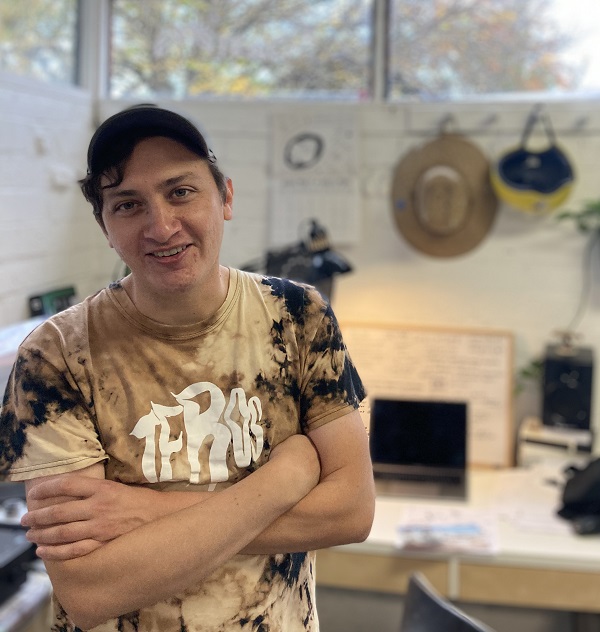David Peña at JSMA: Fences as permeable boundaries
3 min read
Melvin Bravo: Picture a fence at your granddad’s house, surrounding not only the yard and house, but memories of unaccounted years that haunt both body and spirit. What lives in there, in that fence, that cradled generations before you? What lives outside of there that looks bold, tired, and ageless? Can it come with you or is it just a fence you visit so often in the mind?
Though a fence may not seem like much, it’s both the subject and medium of artist and grad student David Peña at this year’s MFA art exhibit happening at the Jordan Schnitzer Museum of Art.
David Peña: The work that’s in the gallery at the JSMA is related to my grandfather’s fence. My grandfather was a welder in San Diego. So thinking about this fence that my grandfather welded for the house and thinking about that skill, I was just sort of doing research on family histories and what it means to be from borders, and fences that are familiar to homes.
And we see fences all around us all the time, but what do they do? How do they serve us? What’s the function of a fence, you know? You can jump over it easily. It’s more of a signifier—not to enter. It’s sort of like a marker of protection. But this particular fence has a bunch of motifs in it, that look like hearts.
Melvin Bravo: These motifs were welded together with intricate design and pattern, which is a realm familiar to David. He has a style that’s abstract but not arbitrary. The pieces will make you look twice without losing your second thought. In other words, there’s a theme to everything you’re looking at and with this piece called “Permeable Boundaries,” that’s just the beginning of what a fence can mean.
David Peña: There’s a proverb associated to that particular motif that means it’s not taboo to look to the past, or basically, like, looking to the past to inform the present. So there was a lot of meaning in that for me, just thinking about: What does it mean when you lose people? You know, I’ve been thinking about loss of family, thinking about loss of culture. What does it mean to change, but still carry parts of your ancestors with you into the future?
So in recreating this fence that I made in this gallery space, I’m really thinking about what is it—what is it for me to create permeable boundaries—boundaries that, they’re up, they’re signifiers, but they allow entry, and they potentially keep out things that don’t serve us, and still protect. So there’s a lot of thinking about: What boundaries are we setting up for each other? And how do we take care of each other? And what is it to reconstruct the fence that your grandfather made? So it’s a practice and a learning process.
Melvin Bravo: Along with the sculpture, David created a zine, a small printed booklet that showcases old black and white photographs of his grandfather and the house he lived in, with poems called “Care for Cells” and “Patterns of Amor,” the latter sounding like:
David Peña:
…welded patterns de amor
hold the entrance, held us juntos
home beyond wood beams y techo
¿qué pasa cuando el espacio se cambia?
montes as mountain as apellido
shaped by hand
signal for visitantes
con tiempo, time shifts
leaving traces
Melvin Bravo: So, if you’re in the area, check out the exhibit, which will be up until June 20. And the next time you come across a fence, take it in for what it truly is: A history that holds more than just a yard, but holds a home.
For Audio Storytelling, this is Melvin Bravo, wishing you a great week.



